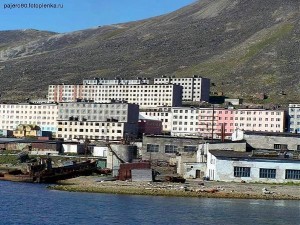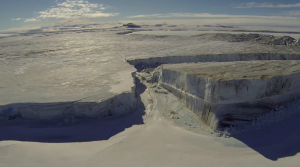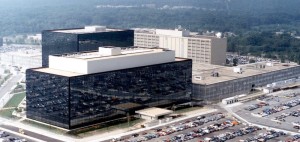Here is a look at a new cover idea for my Perry Helion thriller, The Atlas Fracture. This re-design is still in the works, could go in just about any direction.
Let me know what you think.

Here is a look at a new cover idea for my Perry Helion thriller, The Atlas Fracture. This re-design is still in the works, could go in just about any direction.
Let me know what you think.
 In the final scenes of my upcoming thriller, The Ceres Plague, Perry Helion has to crash a private party driving a Belaz 7555 mining dump truck (also called a “haul truck”). Not your usual James Bond-type Aston Martin spy sports car. These Belarussian-built trucks are made to work in tough industrial conditions. Though their designers probably never imagined quite what Perry asks one Belaz monster to do.
In the final scenes of my upcoming thriller, The Ceres Plague, Perry Helion has to crash a private party driving a Belaz 7555 mining dump truck (also called a “haul truck”). Not your usual James Bond-type Aston Martin spy sports car. These Belarussian-built trucks are made to work in tough industrial conditions. Though their designers probably never imagined quite what Perry asks one Belaz monster to do.
The Belaz 7555 has a payload capacity of 55 metric tons, or about 3 and a half city buses (if they’d stay in the cargo hopper). And that’s just the cargo, adding in the weight of the truck itself, and we’re tipping the scales at 95 metric tons.
Bond can keep his BMWs and Benz’s. Perry favors the downhill kinetic “oomph” of a fully-loaded Belaz making tracks toward the bad guys.
 The final scenes of the next Perry Helion thriller, The Ceres Plague, take place in the struggling Russian Bering Sea settlement, Provideniya. Like some other cities in Russia — and America — Provideniya has seen better days. The end of the Cold War resulted in Provideniya losing a sizeable chunk of its population. Vistas of Providenyia are dominated by the herd of outsized apartment buildings that graze across the city’s hillside. Many of the drab apartment blocks, built during the Soviet era, stand empty and crumbling, giving the town an air of dissolution and fall. Sad for the people who still live there and have to suffer through the brutal winters, but a great locale for the final action sequence of The Ceres Plague.
The final scenes of the next Perry Helion thriller, The Ceres Plague, take place in the struggling Russian Bering Sea settlement, Provideniya. Like some other cities in Russia — and America — Provideniya has seen better days. The end of the Cold War resulted in Provideniya losing a sizeable chunk of its population. Vistas of Providenyia are dominated by the herd of outsized apartment buildings that graze across the city’s hillside. Many of the drab apartment blocks, built during the Soviet era, stand empty and crumbling, giving the town an air of dissolution and fall. Sad for the people who still live there and have to suffer through the brutal winters, but a great locale for the final action sequence of The Ceres Plague.
By the way, the first draft of Ceres is now complete. A few weeks of re-writing, beta reading and editing and The Ceres Plague will be winging its way to readers.
I wonder if any of The Ceres Plague’s future readers will live in Provideniya?
 Writers often do research for their books. And while most of that digging is routine — street names, bullet calibers and wine chateaus — it can delve into some wonky, specialized corners. Sometimes this stuff is so arcane that the NY Times hails the science as an exciting new development.
Writers often do research for their books. And while most of that digging is routine — street names, bullet calibers and wine chateaus — it can delve into some wonky, specialized corners. Sometimes this stuff is so arcane that the NY Times hails the science as an exciting new development.
In my upcoming book The Ceres Plague, the next book in the Perry Helion thriller series, the brilliant and twisted microbiologist Dr. Taylor Crandee has fashioned a deadly yet highly targetable superbug called Crandium Donatellus (yes, he named it after himself!). Part of the genius of Crandium stems from Crandee’s ability to manipulate a bacteriological process called CRISPR. The CRISPR defense mechanism allows bacteria to fight off attacking viruses by cutting into and even editing viral DNA. Crandee discovers how to use this technique to target Crandium to attack human DNA in a fiendish variety of ways.
Naturally, CRISPR sounds like a writer’s fantasy. Bacteria would never have so sophisticated a defense, right? In fact, this devious microbial technique actually exists. The NY Times writes about CRISPR in a recent Science News section (“A Powerful New Way toEdit DNA”), hailing it as a possible major tool in microbiology research.
The Times makes no mention of Dr. Crandee or Crandium Donatellus. But I’m sure they’ll catch up soon enough.
Image courtesy National Institutes of Health
 We relax, unwind and have fun on summer vacation. Here in Maine we have islands close to the coast that are tailor-made for enjoying the lazy days of summer — whether you are lucky enough to own a home there or just enjoying it for the day. So Joe Souza setting his devilishly deadly thriller, The Liger Plague, on a fictional Maine island is a devastating punch in the gut. The poor folks on Cooke’s Island just want to have fun and Souza makes their time in the sun a nightmare.
We relax, unwind and have fun on summer vacation. Here in Maine we have islands close to the coast that are tailor-made for enjoying the lazy days of summer — whether you are lucky enough to own a home there or just enjoying it for the day. So Joe Souza setting his devilishly deadly thriller, The Liger Plague, on a fictional Maine island is a devastating punch in the gut. The poor folks on Cooke’s Island just want to have fun and Souza makes their time in the sun a nightmare.
The lead character is Dr. Taggert Winters, a colonel in the U.S. Army and a microbial expert. A man like Winters makes enemies. As Churchill said, “You have enemies? Good. That means you’ve stood up for something in your life.” And Winters, who has devoted his career to preventing heinous pathogens from being used against the American people, is opposed by enemies who are as clever and ruthless as he is dedicated. They transform Winters’ summer idyll on Cooke’s Island into a hellish struggle to save his wife and daughter and ultimately just to survive biological meltdown.
The liger of the title refers to a crossbred animal – a half lion, half tiger. Souza makes this enigmatic beast the perfect symbol for the double whammy pathogen the bad guys release on Cooke’s Island. It’s a freak, an unnatural commingling of deadly talents that no one is ready for, least of all Winters.
Aiding Winters in his struggle is a savvy young man named Fez, who grew up on the island and knows both its people and byways. Fez provides just the right local knowledge at key times. And the young man and Winters develop a touching father/son relationship. Winters runs across other folks in the course of the story. Some are trustworthy and some are not — but neither Winters, nor the reader, can take things at face value.
Like its namesake, The Liger Plague is a clever combination. It’s a twisty thriller story with worldwide implications and a bloody survival epic. To Souza’s great credit, it isn’t clear that Winters and his family will succeed in the daunting task his enemies have set him by releasing the liger plague on the unsuspecting vacationers of Cooke’s Island. Here are two results you might have after reading the beastly events detailed in The Liger Plague: 1) you’ll be entertained and look forward to the next installment in Souza’s Liger series and 2) you may want to spend the rest of your vacations on the mainland.
 Check out this video shot by Enrico Sacchetti at Terra Nova Bay, Antarctica, at the Italian Mario Zucchelli Research Station. Gorgeous views of Antarctica and possibly a view of the deadly Atlas Fracture?
Check out this video shot by Enrico Sacchetti at Terra Nova Bay, Antarctica, at the Italian Mario Zucchelli Research Station. Gorgeous views of Antarctica and possibly a view of the deadly Atlas Fracture?
 A few days ago, it was my birthday and I got a little freaked out. The day was no big deal, of course, everyone has one (except maybe for mythical beats like titans, dragons and the things in those chupacabra videos).
A few days ago, it was my birthday and I got a little freaked out. The day was no big deal, of course, everyone has one (except maybe for mythical beats like titans, dragons and the things in those chupacabra videos). Wiretaps and satellite traps, radio transmissions and Internet permissions – the NSA has always excelled at the soft arts of code cracking and message parsing. Everything about the agency, from its Darthian headquarters in Ft. Meade, Maryland to its massive server complex in the wilds of Utah, suggests quiet and studious types pouring over reams of telephone intercepts looking for patterns. But now the NY Times reports that the NSA is also a little bit like a utility-belted cable guy rummaging around in your basement. Seems the Puzzle Palace likes to mess with hardware, too.
Wiretaps and satellite traps, radio transmissions and Internet permissions – the NSA has always excelled at the soft arts of code cracking and message parsing. Everything about the agency, from its Darthian headquarters in Ft. Meade, Maryland to its massive server complex in the wilds of Utah, suggests quiet and studious types pouring over reams of telephone intercepts looking for patterns. But now the NY Times reports that the NSA is also a little bit like a utility-belted cable guy rummaging around in your basement. Seems the Puzzle Palace likes to mess with hardware, too.
“The technology, which the agency has used since at least 2008, relies on a covert channel of radio waves that can be transmitted from tiny circuit boards and USB cards inserted surreptitiously into the computers. In some cases, they are sent to a briefcase-size relay station that intelligence agencies can set up miles away from the target.”
So, not only are the digital bits of your computer unreliable, subject to scooping up by black box routers and compromised network access points, but now you can’t even trust the silicon and copper you bought with your own money – not only is the NSA listening to your computer’s babbling, it has also reached in and attached a “tiny circuit board” or two to your beloved machine – like a secret vasectomy you knew nothing about. Computer virility is wilting all over the world.
 What happens when you combine an eye for technical detail with a gift for gritty immediacy and a feel for family dynamics? You get The Perseid Collapse, by Steven Konkoly, a meticulously researched, frighteningly real depiction of one family dealing with a deadly disaster.
What happens when you combine an eye for technical detail with a gift for gritty immediacy and a feel for family dynamics? You get The Perseid Collapse, by Steven Konkoly, a meticulously researched, frighteningly real depiction of one family dealing with a deadly disaster.
The Perseid Collapse picks up main character Alex Fletcher and his family a few years after the events of Konkoly’s earlier thriller, The Jakarta Pandemic. Fletcher and family are again hit with a crisis that they must face with little more than their own resources. Luckily for the Fletchers, Alex is an ex-marine who learned his lesson about disaster from his family’s experiences in the Jakarta outbreak. He has invested considerable sweat in planning and stockpiling gear for the next disaster. When his family is struck by terrifying events in the beginning of the book, Fletcher and clan go into full scale operations mode and try to carry out the plan. But as the pre-WWI German strategist Von Moltke famously said, “No battle plan survives contact with the enemy.” Alex and family must improvise and deal with the increasingly chaotic events on the ground as society slides toward anarchy. They find themselves facing split second, life-and-death decisions that ramp up the story to a deadly intensity.
This book reveals Konkoly as a polished writer in ways large and small. One is his knack for presenting a large-scale event with just enough detail to let us know something world-changing is taking place but leaving its origins a captivating mystery. In The Perseid Collapse an object appears to have struck the Earth from space, but we don’t know the full extent of the impact, or why it seems to have devastated so many aspects of modern technology.
Konkoly marries this skill at conjuring large scale uncertainties with the small scale certainties of the smart, experienced and adaptable Alex Fletcher. Fletcher is a one-man force multiplier, his military training and cool skill work to meld his two suburban friends, Ed and Charlie, into an effective action team. Together the three must hurry from Maine to Boston attempting to rescue stranded family members. Fletcher’s encyclopedic knowledge of weaponry and tactical ops serves his family and friends well. He is the rock of the group — the type of guy you’d want alongside you when it all hit the fan. And Konkoly pulls no punches here. He shows us a post-disaster world of troubling moral conundrums. He dares us to keep up when he shows Alex’s grim determination to meet out the ultimate violence when he deems it necessary.
Many thriller writers would be more than happy with hitting just these notes so well. But Konkoly also draws a picture of a real family with stresses and strains dealing with an extraordinary situation. His dialog and details are telling. I hope he continues this thread of the story and develops these characters even more fully. The Perseid Collapse ends with a cliffhanger — we know there is more adversity and adventure to come in the next installment of the series, The Perseid Collapse: Event Horizon. I highly recommend you grab The Perseid Collapse at Amazon.com and jump aboard for the ride!
 Their odd, parabolic shapes loom strange in the treeless tundra of the Arctic. Like alien eyes or movie screens where there are people. Even the name is enigmatic: White Alice. A name that suggests Lewis Carroll and fantastical realms. In the 1950s and 1960s before communications satellites became plentiful, the U.S. military needed a method for keeping the far flung bases in Alaska in touch with the command center at NORAD headquarters and with the Pentagon.
Their odd, parabolic shapes loom strange in the treeless tundra of the Arctic. Like alien eyes or movie screens where there are people. Even the name is enigmatic: White Alice. A name that suggests Lewis Carroll and fantastical realms. In the 1950s and 1960s before communications satellites became plentiful, the U.S. military needed a method for keeping the far flung bases in Alaska in touch with the command center at NORAD headquarters and with the Pentagon.
White Alice was the answer. It was a system for scattering radio over the horizon using bizarre curved antennas. The White Alice parabolic antennas rising up from the empty tundra testified to Alaska’s importance as one of the front lines in the Cold War struggle with the Soviets.
The enigmatic White Alice shapes make an appearance in my next Perry Helion thriller, The Ceres Plague. They’re just one of the mysterious remnants of the Cold War that crazed humanity-transforming Dr. Taylor Crandee gets his mitts on in The Ceres Plague.
top photo by TVJ